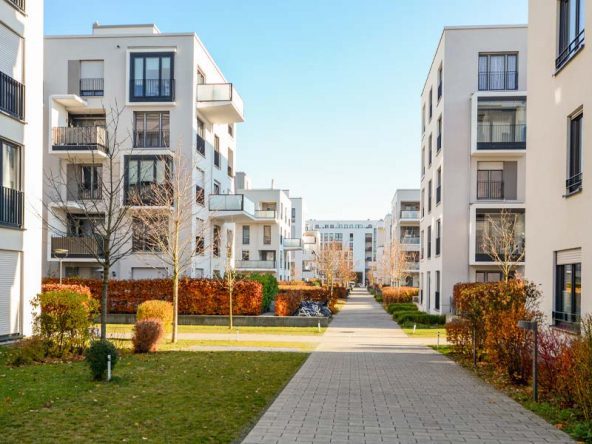Community living and co-housing have emerged as innovative and practical solutions to the housing challenges in Kenya. These living arrangements involve individuals or families coming together to share resources, responsibilities, and spaces, fostering a sense of community and mutual support. This newsletter explores what community living and co-housing entail, their applications in Kenya, governance, advantages, challenges, and potential solutions.
What It Is
Community living and co-housing represent a shift from traditional individualistic housing models to a more collective approach. In these setups, residents maintain private living spaces while sharing common areas such as kitchens, gardens, and recreational facilities. The emphasis is on cooperation, sustainability, and collective decision-making. These communities are often intentionally formed, with members sharing similar values and goals, such as environmental sustainability, social inclusion, and cost efficiency.
How It’s Used
In Kenya, community living and co-housing are primarily utilized in urban and semi-urban areas where housing costs are high, and the demand for affordable living solutions is significant. These arrangements provide a platform for residents to pool resources, thereby reducing individual expenses on housing, utilities, and maintenance. Community living can take various forms, from eco-villages that focus on sustainable living practices to urban co-housing projects that offer modern amenities and foster a sense of community among residents. Shared responsibilities such as childcare, cooking, and maintenance tasks are common, promoting a collaborative lifestyle that benefits all members.
Governance and Legislation
The governance of community living and co-housing in Kenya varies depending on the structure and scale of the community. Some co-housing projects operate under cooperative societies, which are governed by the Cooperative Societies Act. This act provides a legal framework for the formation, registration, and management of cooperatives, ensuring transparency and accountability. In other cases, homeowners associations may govern these communities, establishing rules and regulations to manage shared spaces and resources. Local authorities may also have a role in overseeing the development and maintenance of co-housing projects, particularly in urban areas where zoning laws and building regulations apply. However, there is no specific legislation that exclusively governs community living and co-housing, which can lead to ambiguities in legal and administrative matters.
Advantages
Community living and co-housing offer numerous advantages, making them attractive options for many Kenyans. The primary benefit is cost efficiency. By sharing resources and spaces, residents can significantly reduce their living expenses, making housing more affordable. Additionally, these arrangements foster strong social networks and a sense of belonging, which can enhance residents’ quality of life. The communal nature of co-housing promotes mutual support, with neighbours often helping each other with daily tasks and childcare. Sustainability is another key advantage, as shared resources and communal living practices reduce waste and environmental impact. Eco-villages, for example, often incorporate renewable energy sources, organic farming, and other sustainable practices that benefit both residents and the environment.
Challenges
Despite the many benefits, community living and co-housing also present challenges. One of the main difficulties is managing conflicts among residents. Living closely with others can lead to disagreements over shared responsibilities, personal boundaries, and community rules. Effective conflict resolution mechanisms are essential to maintain harmony within the community. Collective decision-making processes, while democratic, can be time-consuming and sometimes lead to gridlock, particularly when consensus is difficult to achieve. Privacy concerns also arise in co-housing settings, as shared spaces can compromise individual privacy, making it challenging for some people to adapt to this lifestyle.
Possible Solutions
Addressing the challenges of community living and co-housing requires proactive measures and effective strategies. Establishing clear and transparent governance structures can help manage conflicts and ensure smooth operations. Regular meetings and open communication channels are crucial for resolving disputes and making collective decisions. Communities can benefit from training in conflict resolution and mediation to equip residents with the skills needed to handle disagreements constructively. Privacy concerns can be mitigated by designing living spaces that balance communal and private areas, allowing residents to enjoy both social interactions and personal solitude. Additionally, fostering a culture of respect and understanding within the community can help mitigate conflicts and promote a positive living environment.
Conclusion
Community living and co-housing offer innovative and practical solutions to the housing challenges in Kenya. These arrangements promote cost efficiency, social support, and sustainability, making them attractive to a growing number of people. While they present challenges such as conflict management and privacy concerns, these can be addressed through effective governance, open communication, and thoughtful design. As awareness and interest in community living and co-housing continue to grow, these models have the potential to significantly impact the housing landscape in Kenya, offering residents a more affordable, supportive, and sustainable way of life.
Disclaimer:
Please note that the information provided in this article is for general informational purposes only and should not be construed as legal advice. It is always advisable to consult with a qualified legal professional to discuss your specific circumstances and obtain tailored legal counsel.





